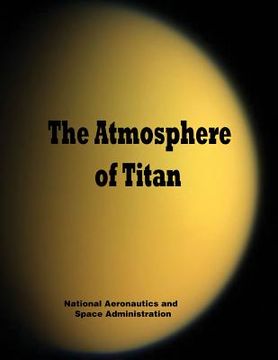Share
The Atmosphere of Titan (in English)
National Aeronautics and Administration
(Author)
·
Createspace Independent Publishing Platform
· Paperback
The Atmosphere of Titan (in English) - Administration, National Aeronautics and
$ 12.79
$ 15.99
You save: $ 3.20
Choose the list to add your product or create one New List
✓ Product added successfully to the Wishlist.
Go to My WishlistsIt will be shipped from our warehouse between
Monday, June 17 and
Tuesday, June 18.
You will receive it anywhere in United States between 1 and 3 business days after shipment.
Synopsis "The Atmosphere of Titan (in English)"
Titan offers a unique opportunity in solar system exploration. It is the smallest known body with an atmosphere. In terms of spacecraft entry dynamics, it has the most accessible atmosphere in the solar system. It has dark reddish clouds which are probably composed of organic compounds, falling continually to the surface. It has the highest ratio of methane to hydrogen of all known reducing atmospheres, making an environment in some respects like that of the primitive Earth at the time of the origin of life. It probably has the only surface of all the bodies beyond Mars with atmospheres that entry spacecraft can reach. In terms of planetary rotation rate, Titan's atmospheric circulation may occupy a unique niche between the dynamics of Venus and the Earth. The surface temperature may be 150-200 K or warmer, and one model suggests an ocean of liquid methane and ammonia. While at the present this is the merest speculation, the presence of life on Titan is by no means out of the question. Hydrogen in the Titanian atmosphere must be rushing away to space at a high rate, perhaps producing an enormous gas ring or comet-like tail in the vicinity of Saturn. The escaping gas must be produced from the interior of Titan, perhaps arriving into the atmosphere through methane, ammonia, and water volcanoes. A substantial improvement of our knowledge of Titan can be achieved with present instrumentation in the vicinity of the Earth -- by ultraviolet and infrared spectroscopy, infrared and microwave radiometry, and stellar occultations. Observational and modeling techniques that have been used to study the planets have just begun to be applied to Titan. Many important properties are accessible, and a considerable improvement in our knowledge of Titan can be expected in the near future. But a thorough characterization of the environment of Titan -- and, in particular, studies of the tantalizing questions of organic chemistry and surface morphology -- must await spacecraft investigations at or near Titan.
- 0% (0)
- 0% (0)
- 0% (0)
- 0% (0)
- 0% (0)
All books in our catalog are Original.
The book is written in English.
The binding of this edition is Paperback.
✓ Producto agregado correctamente al carro, Ir a Pagar.

